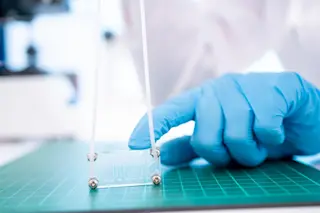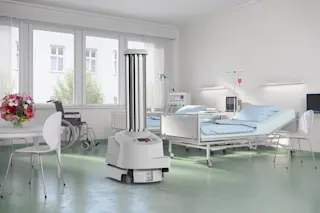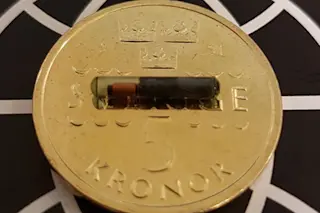A new device smaller and cheaper than a postage stamp could be used to diagnose diseases in developing countries, Harvard researchers report. The sophisticated microfluidic diagnostic devices, called microPADS, are made out of little more than paper and sticky tape and cost about three cents each.
"The starting point with us was asking, 'What's the simplest, cheapest [material] we could think of?' ... And that was paper," [The Scientist]
said co-author George Whitesides. The microPADs, described in the Proceedings of the National Academy of Sciences [subscription required], are made with layers of paper and water-proof tape. Tiny holes and channels etched into the paper lead from a small number of
single wells on top and branch out through the stack to an array of microwells on the bottom [IEEE Spectrum].
When liquids such as urine or blood is placed in the upper wells, they are absorbed through the channels into ...













